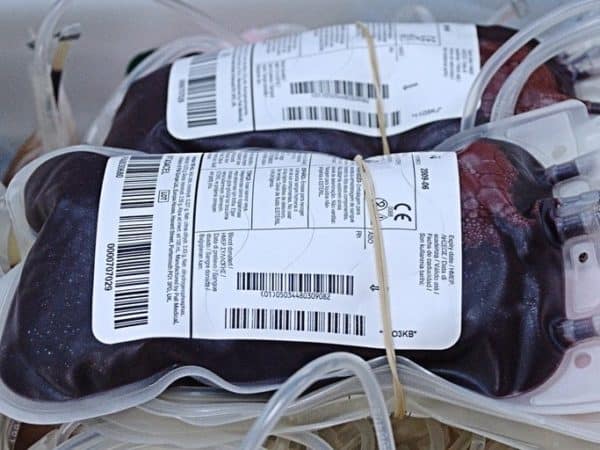
 A new Canadian study has determined that when it comes to blood transfusions, using old blood is just as good as using new blood.
A new Canadian study has determined that when it comes to blood transfusions, using old blood is just as good as using new blood.
By current standards, donated blood can be stored for up to 42 days before use, with the prevailing assumption being that since stored blood will undergo some levels of biological and structural changes over the course of its shelf life, fresher is always going to be better.
Not necessarily, according to a new study from the McMaster Centre for Transfusion Research at McMaster University in Hamilton.
Researchers looked at over 31,000 patient records from hospitals in Canada, the United States, Israel and Australia, all of whom received blood transfusions, who were then divided into two groups – those who received blood stored for an average of 13 days versus those who received blood stored for an average of 23 days. In terms of rate of death, the researchers found no significant difference between those in the shorter storage group and those in the longer storage group.
“It’s been a contentious issue, but our study finally puts an end to the question about whether stored blood could be harmful and fresher blood would be better,” says lead author Nancy Heddle, professor emeritus of medicine at McMaster University, whose research is published in the New England Journal of Medicine. “Our study provides strong evidence that transfusion of fresh blood does not improve patient outcomes, and this should reassure clinicians that fresher is not better.”
From major surgeries to cancer treatments and disease management, blood transfusions are one of the most common elements to modern medicine. And the need for more donors is ever present, according to the Canadian Blood Services (CBS), who recently announced changes to donor regulations. The new guidelines state that women donors will now have to wait 12 weeks between donations rather than the previous eight while male donors can give at the same frequency (every 56 days) but will need to pass a slightly stricter hemoglobin test.
The CBS says the new rules aim at getting high-quality red blood cells to recipients, which means that donors’ iron stores need to be higher at the time of donation. “Males are different physiologically and our most recent study shows male donors can maintain safe levels of iron when donating following the current guidelines of every 56 days,” says Ross FitzGerald, communications specialist for CBS. “However, the results also show that female donors should allow more time to pass between donations to prevent low iron stores, which is why we’ve changed the maximum number of donations specifically for females to four times a year, or every 84 days.”
The new guidelines mean that more blood donors will be needed to make up for the longer length between regular donor visits, with 6,000 new blood donors needed in Ontario alone. Many donors will not be able to donate as often, so others must step forward to fill this gap by giving blood and encouraging friends and family to make giving a part of their lives,” says Mark Donnison, vice-president of donor relations at the CBS.
Contact the Canadian Blood Services to locate a blood donor clinic near you.
Leave a Reply
You must be logged in to post a comment.




 Share
Share Tweet
Tweet Share
Share




Comment